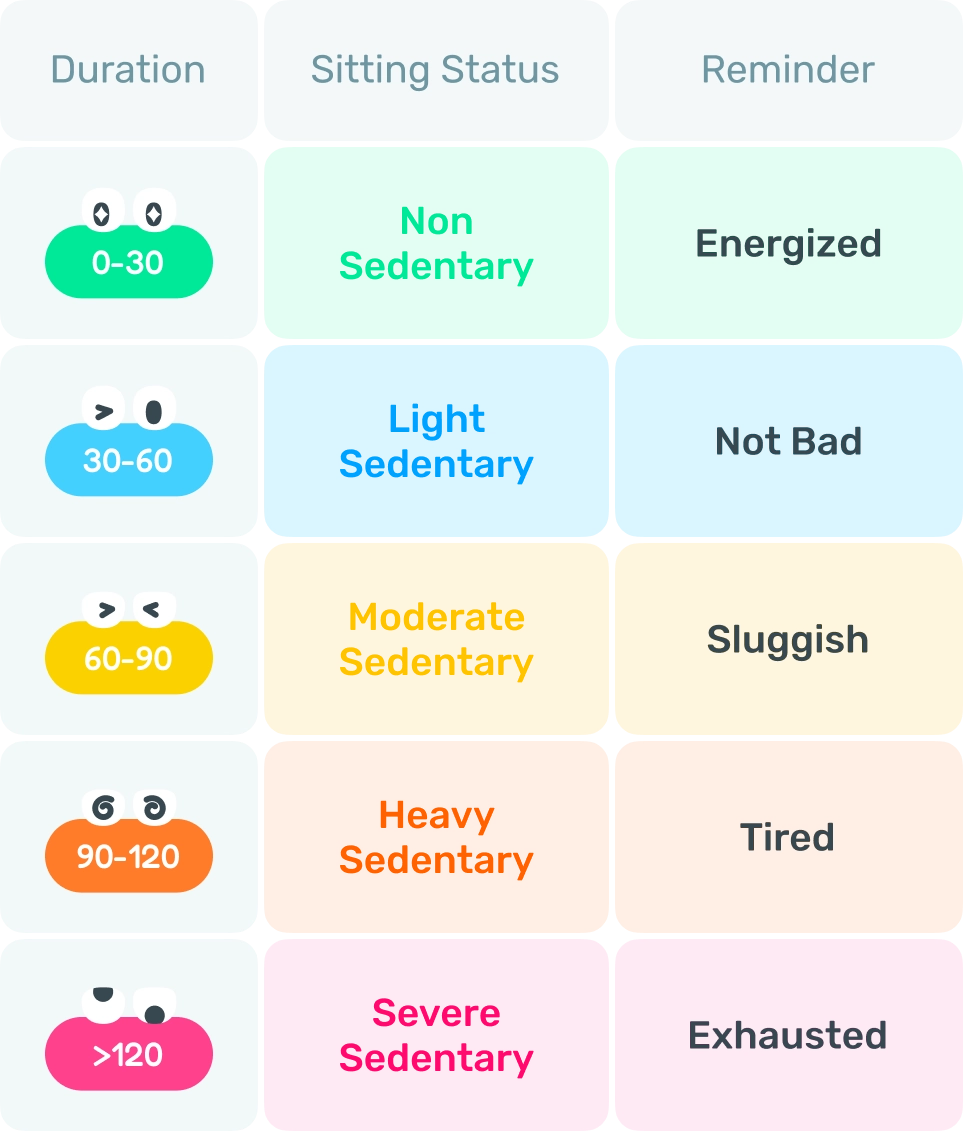Reducing the Harm of Sedentary Behavior with Relaxo

How Relaxo Records and Resets Your Sedentary Time
Relaxo uses data from your Apple Watch to track your Physical Effort. When your effort level drops to 1.5 METs or below, the app begins counting your sitting time. You'll get a reminder to stand and move after roughly 60, 90, or 120 minutes of inactivity (you can customize this interval).
Once you start moving—whether you're walking, running, or cycling—and your Physical Effort rises above 1.5 METs, Relaxo automatically switches to active-time tracking. If any activity meets the reset requirement, your sitting timer resets instantly.
Relaxo also includes a library of quick stretches and mobility exercises for your shoulders, neck, back, and limbs. Finishing any of these exercises will also reset the timer.
How Relaxo Defines Sedentary Behavior
The Science of "Sitting Too Long"
What exactly counts as sedentary? According to authorities like the WHO and major research institutions, it is defined as any waking activity with low energy expenditure (under 1.5 METs) while sitting or lying down. Unfortunately, this covers most of our modern lives—from everyday studying and working to watching TV or playing games.
Studies show that the damage isn't instant; it compounds over time. To help you fight this risk, Relaxo utilizes survey data from the WHO and the University of Cambridge to separate sedentary time into different risk stages.
The 5 Levels of Sitting
Your body has a limited tolerance for stillness. As prolonged sitting continues, it progresses through distinct physiological stages: musculoskeletal fatigue, leading to a metabolic slowdown, and eventually, a sharp increase in cardiovascular risk.
Based on these changes, Relaxo divides continuous sitting time into 5 Status Levels. Our logic is straightforward: there is a "safety limit," and crossing it causes health risks to spike. That’s why we recommend a 3-5 minute break every 30-60 minutes to break this cycle and restore your body’s vitality.

Note:
Sometimes your Apple Watch may miss detecting when you stand—for example, due to small wrist movements or sensor limitations. Relaxo recommends breaking up sedentary time by walking, stretching, or doing guided exercises. Why isn’t my Apple Watch always recording stand minutes, and how can I fix it?
References
Bull, F. C., Al-Ansari, S. S., Biddle, S., Borodulin, K., Buman, M. P., Cardon, G., Carty, C., Chaput, J. P., Chastin, S., Chou, R., Dempsey, P. C., DiPietro, L., Ekelund, U., Firth, J., Haskell, W. L., Haug, E., Lambert, E. V., Leitzmann, M., Loyen, A., … Willumsen, J. F. (2020). World Health Organization 2020 guidelines on physical activity and sedentary behaviour - World Health Organization
Baker, R., Coenen, P., Howie, E., Williamson, A., & Straker, L. (2018). The short term musculoskeletal and cognitive effects of prolonged sitting during office computer work. International Journal of Environmental Research and Public Health, 15(8), 1678. doi: 10.3390/ijerph15081678.
Benatti, F. B., & Ried-Larsen, M. (2015). The effects of breaking up prolonged sitting time: A review of experimental studies. Medicine & Science in Sports & Exercise, 47(10), 2053–2061. doi: 10.1249/MSS.0000000000000654.
Hamilton, M. T., Hamilton, D. G., & Zderic, M. M. (2007). "Role of low energy expenditure and sitting in obesity, metabolic syndrome, type 2 diabetes, and cardiovascular disease." Diabetes, 56(11), 2655-2667.
GBD 2019 Risk Factors Collaborators. (2020). Global burden of 87 risk factors in 204 countries and territories, 1990–2019: a systematic analysis for the Global Burden of Disease Study 2019. The Lancet, 396(10258), 1223–1249. doi: 10.1016/S0140-6736(20)30752-2.
Patterson, R., McNamara, E., Tainio, M., de Sá, T. H., Smith, A. D., Sharp, S. J., Edwards, P., Woodcock, J., Brage, S., & Wijndaele, K. (2018). Sedentary behaviour and risk of all-cause, cardiovascular and cancer mortality, and incident type 2 diabetes: a systematic review and dose response meta-analysis. European Journal of Epidemiology, 33(9), 811–829. doi: 10.1007/s10654-018-0380-1.